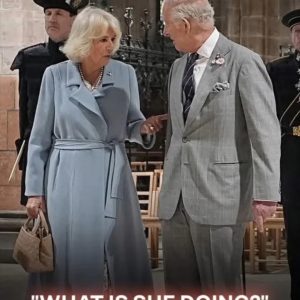When wildlife photographer Lucas Brandt set out on his third trip to Kenya’s Laikipia Plateau, he was hoping to capture something rare—perhaps a fleeting image of a black panther, or maybe a lion pride on the move. But what he stumbled upon instead was something far more haunting: a lone giraffe that would change his perspective on nature forever.
It was early morning. The mist hovered low over the savannah, and the air buzzed with birdsong. Lucas, camera in hand, rode quietly in the back of a Jeep beside his local guide, Daniel. They had been tracking a small group of giraffes seen near a watering hole the evening before.
“I wasn’t expecting anything out of the ordinary,” Lucas later recounted. “I just wanted that perfect shot in the golden morning light.”
But then they saw her.
She stood apart from the rest—taller, thinner, and with an unusual, almost regal stillness. Her coat was whiter than usual, dappled with faint, sandy patches. The other giraffes moved on, but she remained, watching the vehicle with curious, unflinching eyes.
“I raised my camera and froze,” Lucas said. “She was beautiful—otherworldly. I had never seen a giraffe like her before.”
Lucas spent nearly 40 minutes photographing the giraffe from a respectful distance. With every click of the shutter, he found himself more captivated. It wasn’t just her pale coloring—though that was striking—it was the way she stood so still, as though listening to something no one else could hear.
Later, back at the base camp, Lucas showed the photos to Daniel, expecting awe. But Daniel’s expression quickly changed.
“That’s not just any giraffe,” he said, his voice tightening. “That’s the leucistic female. She’s one of the last of her kind.”
A Rare Condition—and a Rare Target
The giraffe Lucas had photographed was suffering from leucism, a rare genetic condition that results in partial loss of pigmentation. Unlike albinism, animals with leucism still have some color in their eyes and skin, but their fur appears dramatically lighter.
In the wild, leucism can be a dangerous trait. While it might seem visually striking to humans, in nature, it can make animals more visible to predators and poachers. It also often makes them stand out from the herd, leading to isolation.
According to Daniel, this particular giraffe had been spotted only a handful of times over the past two years. Conservationists had been monitoring her quietly, fearing that attention might bring danger.
“She’s vulnerable,” Daniel explained. “Not just to lions, but to humans. Poachers. Trophy seekers. People will travel thousands of miles just to take a picture or a life.”
Lucas, stunned by the revelation, felt his initial excitement curdle into sorrow.
“I went from feeling like I had captured something magical to feeling like I had exposed a secret I didn’t deserve to find,” he said.
Beauty, Fragility, and the Human Gaze
Back in Europe, as Lucas reviewed the images, he was torn. The photos were perhaps the best he had ever taken—stunning compositions of light, silence, and grace. But he hesitated to publish them.
In the end, he decided to release only one image—carefully edited to obscure the giraffe’s exact location—and accompanied it with a heartfelt essay about the encounter and its consequences.
“It’s not enough to admire beauty,” he wrote. “We have to protect it. If our fascination leads to exposure, and exposure leads to harm, then we’re part of the problem.”
The post quickly went viral, sparking discussions about wildlife ethics, conservation photography, and the fine line between wonder and intrusion.
Conservationists praised his discretion. “This is what responsible storytelling looks like,” said one Kenyan wildlife officer. “You don’t exploit a fragile life for likes—you protect it.”
A Moment That Lingers
For Lucas, the experience has left a deep and lasting impact. He continues his work as a photographer, but with a shifted mission.
“I used to chase the extraordinary,” he said. “Now I chase what matters.”
He hopes the story of the pale giraffe reminds people not just of nature’s beauty, but of its fragility—and our role in both.
As for the giraffe herself, her fate remains unknown, which may be a blessing. In a world that often sees visibility as a goal, perhaps her survival depends on remaining unseen.





